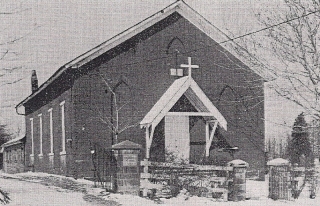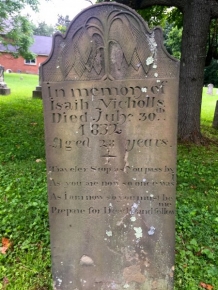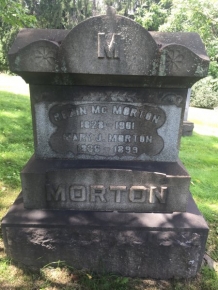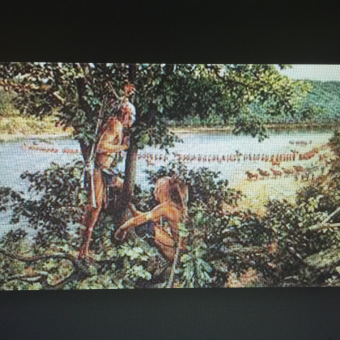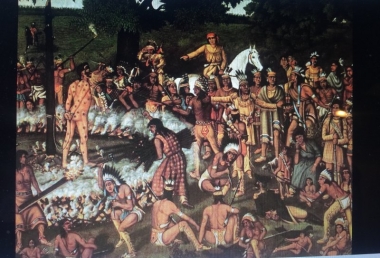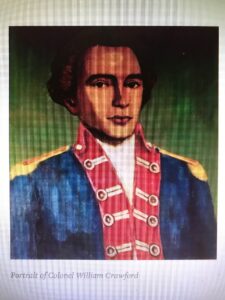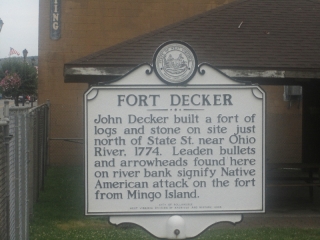Historians including H.J. Newton have documented the earliest years of the Tent Church. The beginnings of the church occurred prior to 1800 when a missionary station and preaching took place at the homestead of Mr. Wiggins, along cross creek, Brooke County, VA. As the ministry grew and organized, the church was initially called Cross Creek Church, after its first ministry at the Wiggins farm along the creek.
About 1799 the church was formally established by the United Presbyterians about 3 miles north of the Wiggins farm near the road from Steubenville to Washington, PA. “The church was probably organized by Rev. John Anderson, founder of the Pittsburgh Xenia Theological Seminary.” The deed for 2 acres of property for the church and cemetery was dated June 27, 1803.
Prior to the erection of the first church building, services were held outside at a crude log structure closed on three sides, and opened in front. A stand or pulpit for the minister was placed facing the audience. Seats for the congregation were arranged in the clearing among the forest trees. As the congregation grew in size, it was a common practice to use tents of canvas as shelter in case of inclement weather. Folks referred to this practice as a “Tent Church” and that designation is what the church is known as today.
The first church building was constructed of rough hewn logs. The story of the log church has passed down over generations, yet the exact construction date is unknown. A glimpse into the pioneer customs of the men who gathered together and helped built the first Tent Church follows: “Whiskey was always plentifully supplied at all public gatherings, such as logrolling and raisings. At the raising of the log building for this church the supply was exhausted before the house was up and a boy was immediately dispatched to the nearest still house for a new supply.”
In 1938 the Follansbee Review published the account of an annual homecoming celebration at Tent Church. Memories of the old church were recalled by many who were present for the homecoming. During the morning session, a report of the church records was presented by F. Herbert Wells, a prominent local citizen who was the main speaker. He noted that the records were incomplete, with spans of time not chronicled. Wells recognized the efforts of Mr. Love and Mr. Gillespie who erected the current church building in 1873, and Mr. Halstead and son, Darwin Halstead, who made the original seats and pulpit.
The Tent Schoolhouse stood next to the Church, and served the children of local pioneer families until it was consolidated with the Colliers School in the early 1920s.
The Tent Farm Women’s Club was founded in 1925 to represent the local families who identified with the Tent Church. One of their objectives was to support in every way possible their Church. The first president was Mrs. Wilbur Freshwater.
The Tent Church cemetery, beside the church, was established in the early 1800s. ”Buried there are a number of historic families of the area including the:
MORES, PUGHS, POOLES, RAYLANDS, STRAINS, WILLIAMSONS, ARCHERS, COXES, BROWNS, CRALLS, CREWELLS, DIVITTS, FRESHWATERS, FERGUSONS, HINDMANS, HUNTERS, HALLS, HAYS, HANLINS, KLENIS, MURCHLANDS, McCARROLLS, McDONALDS, & MILLERS.
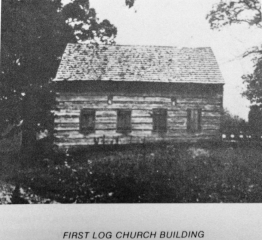
* “History of the Pan-Handle: Being Historical Collections….” J.H. Newton, G.G. Nichols, & A.G. Sprankle (1879), Google Books Online, pp. 322-323.
* Follansbee Review, “Annual Homecoming Celebrated.” Sep. 8, 1938. p.1.
* “From History – by June Grossman & Catherine Slasor,” Brooke Co. Genealogy Society, Online, (a brief history of Tent Church, posted 2016.)
* “Early Cemeteries of Brooke County,” Brooke Co. Genealogy Society, Online.
* “The Tent Church Cemetery: The Cross Creek Cemetery,” Online, Brooke Co. Genealogy Society, posted 2016.
* See Nov. 16, 1955 – 30th Anniversary of Tent Farm Women’s Club on Follansbee Timeline.
